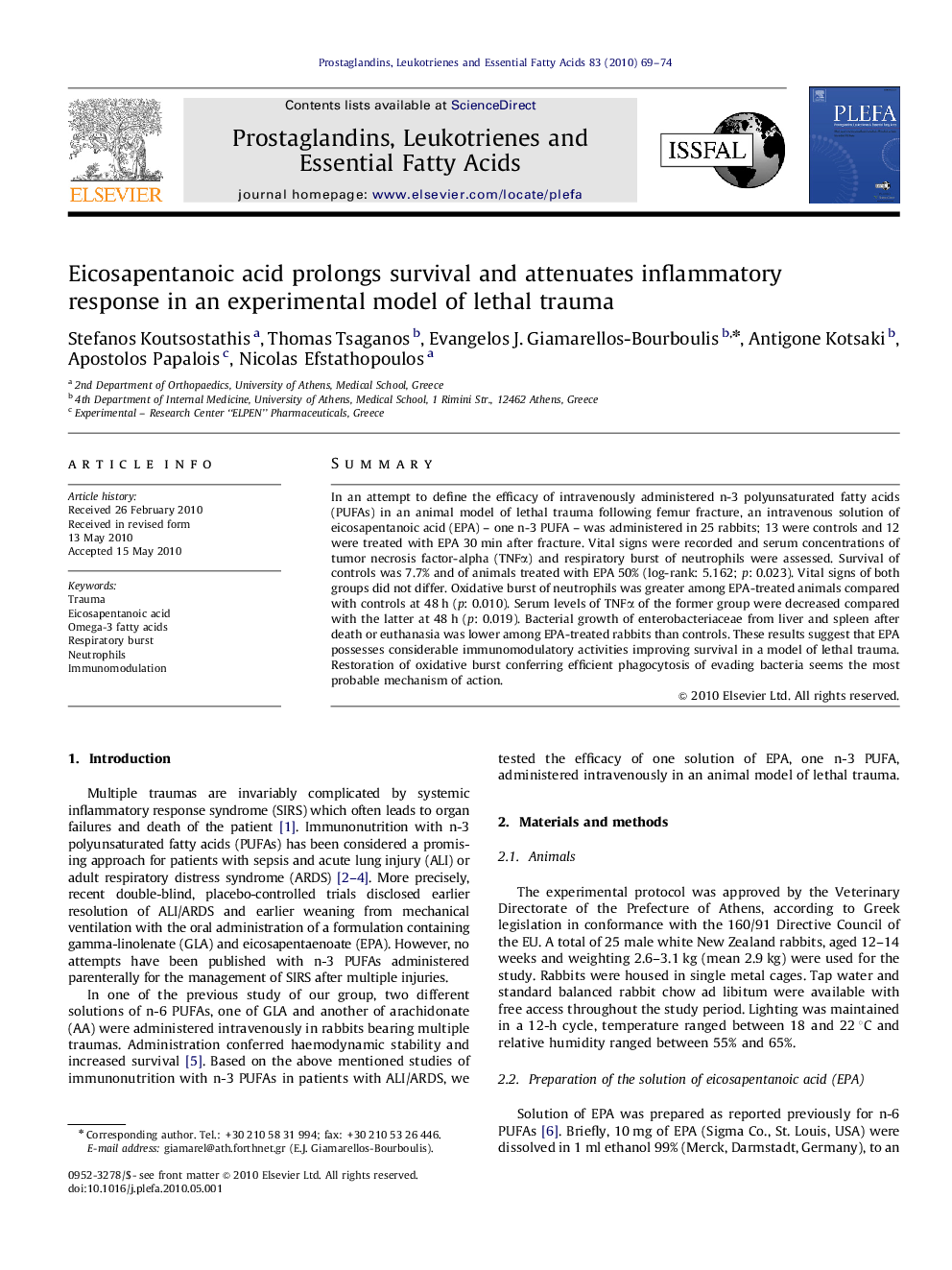| Article ID | Journal | Published Year | Pages | File Type |
|---|---|---|---|---|
| 2777878 | Prostaglandins, Leukotrienes and Essential Fatty Acids (PLEFA) | 2010 | 6 Pages |
Abstract
In an attempt to define the efficacy of intravenously administered n-3 polyunsaturated fatty acids (PUFAs) in an animal model of lethal trauma following femur fracture, an intravenous solution of eicosapentanoic acid (EPA) - one n-3 PUFA - was administered in 25 rabbits; 13 were controls and 12 were treated with EPA 30 min after fracture. Vital signs were recorded and serum concentrations of tumor necrosis factor-alpha (TNFα) and respiratory burst of neutrophils were assessed. Survival of controls was 7.7% and of animals treated with EPA 50% (log-rank: 5.162; p: 0.023). Vital signs of both groups did not differ. Oxidative burst of neutrophils was greater among EPA-treated animals compared with controls at 48 h (p: 0.010). Serum levels of TNFα of the former group were decreased compared with the latter at 48 h (p: 0.019). Bacterial growth of enterobacteriaceae from liver and spleen after death or euthanasia was lower among EPA-treated rabbits than controls. These results suggest that EPA possesses considerable immunomodulatory activities improving survival in a model of lethal trauma. Restoration of oxidative burst conferring efficient phagocytosis of evading bacteria seems the most probable mechanism of action.
Related Topics
Life Sciences
Biochemistry, Genetics and Molecular Biology
Clinical Biochemistry
Authors
Stefanos Koutsostathis, Thomas Tsaganos, Evangelos J. Giamarellos-Bourboulis, Antigone Kotsaki, Apostolos Papalois, Nicolas Efstathopoulos,
